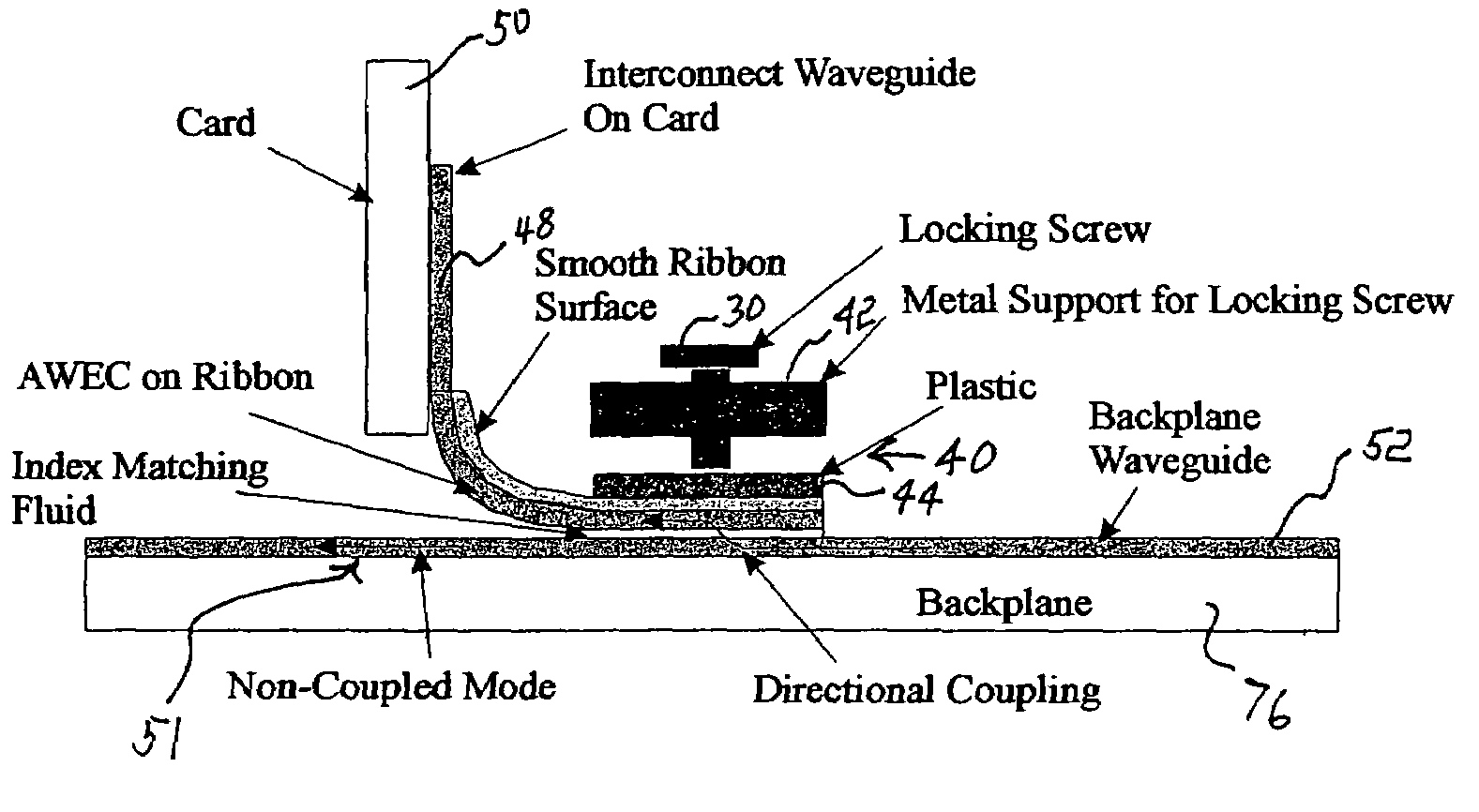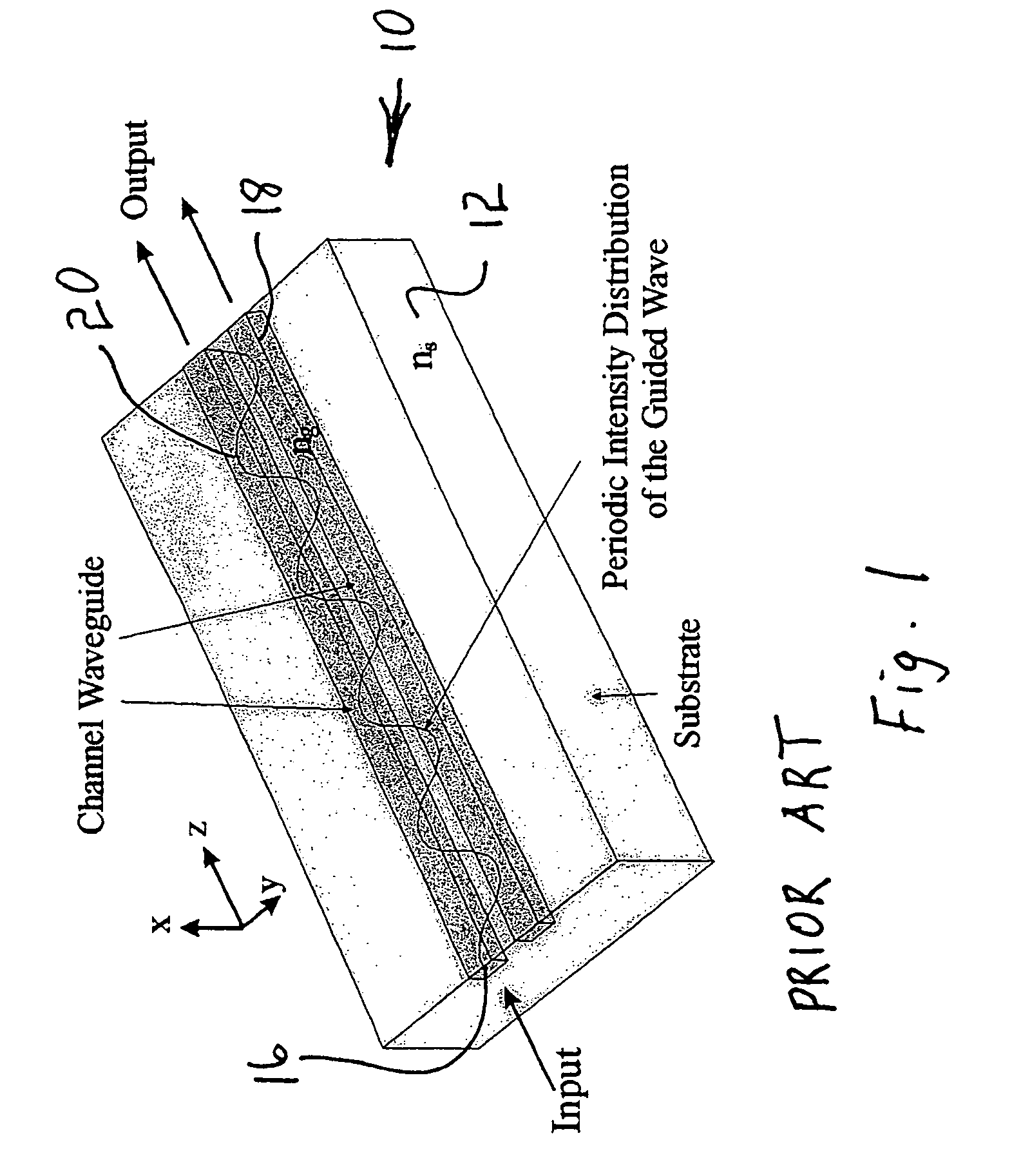Optical waveguide evanescent ribbon coupler
a technology of optical waveguides and ribbon couplers, applied in the direction of optical waveguide light guides, instruments, optics, etc., can solve the problems of large distances required to interconnect devices and circuits on a common substrate, large delay, and large component size drop, so as to achieve high reliability, reduce production costs, and cost
- Summary
- Abstract
- Description
- Claims
- Application Information
AI Technical Summary
Benefits of technology
Problems solved by technology
Method used
Image
Examples
Embodiment Construction
[0024]FIG. 1 shows a conventional prior art waveguide directional coupler structure 10. In this conventional configuration, a substrate 12 has mounted therein an input channel 16 and an adjacent output channel 18. The directional coupling results in the spatial periodic modulation of light intensity as shown by sinusoidal curve 20. Assume that the input light is in channel waveguide 16 at the point z=0 (see FIG. 1), the light intensities of the propagating mode in the two channel waveguides can be evaluated by the coupled mode theory and are given as follows
I1(z)=I0 COS2(κz),
I2(z)=I0 sin2(κz), (1)
where I0=E02. κ is the coupling coefficient between the modes in the two waveguides 16 and 18 which depends strongly on the shape of the mode tails in the channel waveguides and the channel separation. κ can be determined by
[0025]κ=2h2pⅇ-psβ(w+2p)(p2+h2),(2)
where
[0026] p2=β2-ns2k02,h2=ng2k02-β2,tan(hw)=2phh2-p2.(3)
Here, k0=ω / c. w is the channel width, s is the channel separa...
PUM
 Login to View More
Login to View More Abstract
Description
Claims
Application Information
 Login to View More
Login to View More - R&D
- Intellectual Property
- Life Sciences
- Materials
- Tech Scout
- Unparalleled Data Quality
- Higher Quality Content
- 60% Fewer Hallucinations
Browse by: Latest US Patents, China's latest patents, Technical Efficacy Thesaurus, Application Domain, Technology Topic, Popular Technical Reports.
© 2025 PatSnap. All rights reserved.Legal|Privacy policy|Modern Slavery Act Transparency Statement|Sitemap|About US| Contact US: help@patsnap.com



